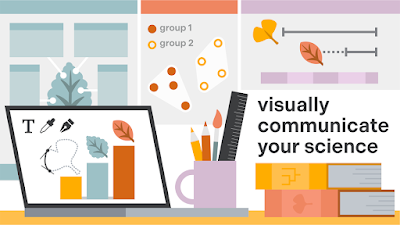One of the downsides of working in a small, niche field is that the literature is scattered and easy to miss. So with this, I apologize for not recognizing that a very relevant book was published several years ago.
Academic Posters is only the fourth book I know of that is specifically devoted to posters. But it is different than the other three. Rather than being a “how to,” D’Angelo’s book is an analysis of posters.
D’Angelo analyzes forty posters each from physics, clinical psychology, and law for their linguistic and graphic style. She also interviews about a dozen practitioners in each field to see how different fields use poster presentations.
The analyses and comparisons here are useful, but getting to them takes time. Maybe it is another difference in fields – me coming from science, D’Angelo working from the humanities – but I kept thinking this useful information could have been presented in a much more compact format.
You have to have introduction and methods. But some sections like, “Principles underlying corpus design” start with very generic considerations of selecting work to analyze that feel more at home in an introductory textbook than presenting new work.
It takes 150 pages to get to the results in Chapter 5. When we get to the results, the results of each field are discussed separately, then there is another section that compares the three disciplines, which requires repeating much of the information we just read through.
Another sixty pages of the book at the end are raw data. As much as I am in favour of archiving raw data for reuse, archiving raw data online in CSV files somewhere would be much more practical than trying to extract the data from printed pages.
Even the index seems protracted. Instead of showing a range of pages (“5-9”), the index lists each page individually (“5, 6, 7, 8, 9”). There seem to be little omissions (the listed sources of physics posters doesn’t add up to the 40 analyzed?) and errors (one figure has the Microsoft Office “hey, there’s a spelling error here” red underline still on the page).
The entire volume would have benefited from more engaged editing and book design.
I recently published an analysis of poster designs that is similar to the analyses in this book, and I
appreciate that extracting data on poster design and writing is
difficult. The level of analysis on the language and graphics is detailed, and are a useful preliminary snapshot of academic poster styles.
See also
Rowley-Jolivet’s review of Academic Posters.
External links
D’Angelo, Larissa. 2016. Academic Posters – A textual and visual metadiscourse analysis. Bern: Peter Lang. 367 pages. ISBN 978-3-0343-2083-2. https://www.peterlang.com/document/1053534
Rowley-Jolivet E. 2016. « Larissa D'Angelo, Academic Posters – A textual and visual metadiscourse analysis », ASp, 70: 141-145. https://doi.org/10.4000/asp.4858








